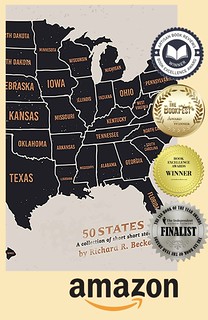My daughter is only two years old, but she wants to walk for arthritis on Saturday, Oct. 25 in support of the Southern Nevada Arthritis Foundation.
How do I know she does?
You’d never know to look at her, but she is one of the 46 million Americans living with arthritis, the nation's leading cause of disability. She has juvenile rheumatoid arthritis in both ankles and one hand, a bitter reminder that underneath her firecracker smile she’s always had to fight a little harder. There are no free rides.
What’s worse for us is that Nevada is only one of nine states in the U.S. that doesn’t have a pediatric rheumatologist. In lieu of seeing the specialist she needs to, we take her to a clinic that specializes in children with cancer. One of the doctors there flies in from Calif. four days a month.
We’re just grateful she was diagnosed. The quick care doctor who initially saw her rejected the obvious: the first ankle had swelled to twice the size of the other. He thought it was a hip infection. (The misdiagnosis might have been worse had some legislators not fought for tort reform.)
Tort reform in Nevada.
A few years ago, Nevada was facing a very real medical crisis. Doctors and nurses were being squeezed out of state as the cost of malpractice insurance continued to rise and health insurance companies added more hurdles than help. (Health care premiums for families here have increased 54.6 percent in the last seven years.)
State Sen. Bob Beers led the fight for tort reform in the state of Nevada and continues to fight for doctors and nurses, which is one of several reasons that the Nevada State Medical Association, the Clark County Medical Society, and Southern Nevada Medical Industry Coalition endorsed him.
It’s very sobering when you can make personal connections between your life and state government. For the three plus months we lived in Summerlin Hospital NICU, rarely did a day go by when I didn’t wonder what might have happened had the doctors and nurses who saved my daughter’s life moved on to greener, more doctor friendly states.
She won’t walk alone.
Two years later, add my daughter to the list of his endorsements.
Sen. Bob Beers told us yesterday he would take a few hours off the campaign trail to help her raise money for arthritis. In fact, since his father also suffers from arthritis, he asked that we set up my daughter’s page under the Team Beers banner. His campaign will be jumpstarting my family’s modest $5,000 fundraising goal with the first $1,000.
For more information about the walk, visit the 2008 Arthritis Walk schedule. And if you’d like to help us reach our goal, you can find the Team Beers page here.

How do I know she does?
You’d never know to look at her, but she is one of the 46 million Americans living with arthritis, the nation's leading cause of disability. She has juvenile rheumatoid arthritis in both ankles and one hand, a bitter reminder that underneath her firecracker smile she’s always had to fight a little harder. There are no free rides.
What’s worse for us is that Nevada is only one of nine states in the U.S. that doesn’t have a pediatric rheumatologist. In lieu of seeing the specialist she needs to, we take her to a clinic that specializes in children with cancer. One of the doctors there flies in from Calif. four days a month.
We’re just grateful she was diagnosed. The quick care doctor who initially saw her rejected the obvious: the first ankle had swelled to twice the size of the other. He thought it was a hip infection. (The misdiagnosis might have been worse had some legislators not fought for tort reform.)
Tort reform in Nevada.
A few years ago, Nevada was facing a very real medical crisis. Doctors and nurses were being squeezed out of state as the cost of malpractice insurance continued to rise and health insurance companies added more hurdles than help. (Health care premiums for families here have increased 54.6 percent in the last seven years.)
State Sen. Bob Beers led the fight for tort reform in the state of Nevada and continues to fight for doctors and nurses, which is one of several reasons that the Nevada State Medical Association, the Clark County Medical Society, and Southern Nevada Medical Industry Coalition endorsed him.
It’s very sobering when you can make personal connections between your life and state government. For the three plus months we lived in Summerlin Hospital NICU, rarely did a day go by when I didn’t wonder what might have happened had the doctors and nurses who saved my daughter’s life moved on to greener, more doctor friendly states.
She won’t walk alone.
Two years later, add my daughter to the list of his endorsements.
Sen. Bob Beers told us yesterday he would take a few hours off the campaign trail to help her raise money for arthritis. In fact, since his father also suffers from arthritis, he asked that we set up my daughter’s page under the Team Beers banner. His campaign will be jumpstarting my family’s modest $5,000 fundraising goal with the first $1,000.
For more information about the walk, visit the 2008 Arthritis Walk schedule. And if you’d like to help us reach our goal, you can find the Team Beers page here.



















